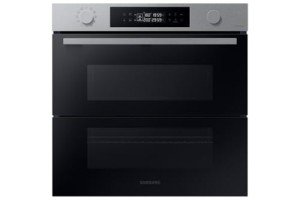5 Integrated Cooker And Hob Leçons From The Pros
The Rise of Integrated Cookers and Hobs: A Comprehensive Guide
In the contemporary kitchen, performance, design, and area optimization are key factors to consider for house owners and aspiring chefs alike. Among the most considerable trends in kitchen style is the increasing appeal of integrated cookers and hobs. These appliances not just improve the cooking experience however also raise the aesthetic appeals of the kitchen area. This post checks out the qualities, benefits, features, and considerations surrounding integrated cookers and hobs, providing readers with a comprehensive understanding of their advantages.
What Are Integrated Cookers and Hobs?
Integrated cookers and hobs describe cooking appliances that are built into the kitchen cabinets, offering a seamless look and taking full advantage of using space. Integrated appliances are created to blend with the visual of the kitchen rather than standing apart like standard models.
Kinds Of Integrated Cookers and Hobs
Normally, integrated cooking appliances include:
- Integrated Hobs: These are cooktops that fit flush into the kitchen counter top. They can be gas, electric, induction, or a mix of these technologies.
- Integrated Ovens: Built directly into the kitchen cabinetry, integrated ovens can come as single, double, or multifunctional models, offering varied cooking capabilities.
- Mix Units: Some designs combine an oven and hob into a single home appliance, using a compact service for smaller kitchen areas.
Benefits of Integrated Cookers and Hobs
1. Area Optimization
Integrated cookers and hobs are ideal for little kitchen locations. By embedding the cooking appliances into kitchen cabinetry, homeowners can utilize their kitchen space more efficiently, leaving more room for meal preparation and movement.
2. Aesthetic Appeal
These appliances supply a streamlined and modern-day want to the kitchen. The capability to pick finishes and incorporate them into the surrounding kitchen cabinetry develops a unified design that improves the general appearance of the kitchen.
3. Enhanced Functionality
Integrated cookers and hobs frequently include sophisticated technology functions, such as clever controls, timers, and cooking presets, enhancing user experience and allowing efficient cooking.
4. Improved Safety
Many integrated hobs include safety steps such as child locks and automated shut-off functions. This makes them much safer than conventional freestanding models, particularly in families with children.
5. Increased Resale Value
Modern homes with integrated appliances often draw in greater resale values. Prospective purchasers try to find sleek styles and modern-day benefits, making integrated cooks and hobs a sensible financial investment.
Features to Consider When Choosing Integrated Cookers and Hobs
When selecting integrated cookers and hobs, several functions should be taken into account:
1. Cooking Technology
- Induction: Provides quick and efficient cooking, simple to clean, and gives accurate temperature level control.
- Gas: Offers traditional cooking benefits with instant heat however needs appropriate ventilation.
- Electric: Provides consistent heat and is available in different styles.
2. Size and Configuration
- Oven Capacity: Should suffice for the home's cooking needs.
- Hob Size: Depending on the variety of burners/vessels required for synchronised cooking.
3. Control Mechanisms
- Touch Controls: Provide a sleek appearance and ease of cleansing.
- Knob Controls: Offer tactile feedback and are user-friendly.
4. Finish and Style
Integrated cookers and hobs can be found in various finishes, consisting of stainless steel, black glass, and even personalized options to match kitchen cabinetry.
5. Energy Efficiency
Go with energy-efficient models that can minimize utility costs and lower ecological impact.
Upkeep and Care
To keep the efficiency and longevity of integrated cookers and hobs, routine maintenance is key:
- Clean the surfaces: Regularly clean down the hob and oven surfaces to prevent residue build-up.
- Inspect seals and gaskets: Ensure that oven seals are undamaged for effective cooking.
- Service frequently: Schedule professional upkeep to keep the appliances in top shape.
Frequently asked questions
1. What is Ovens And Hobs in between built-in and integrated cookers?
Answer: Built-in cookers are designed to be installed within kitchen cabinetry, whereas integrated cookers are developed to effortlessly mix with the cabinets for a more cohesive look.
2. Are integrated appliances more expensive?
Response: Generally, integrated appliances might have a greater upfront expense compared to freestanding systems due to the fact that of their style and the installation requirements. However, they can offer long-term cost savings in energy performance.
3. Can I set up integrated cookers and hobs myself?
Answer: While some homeowners might have the ability to deal with the installation themselves, working with an expert is suggested to guarantee proper fit and function, specifically for gas appliances.
4. Are integrated cookers and hobs simpler to clean?
Answer: Integrated hobs typically have fewer crevices, making them simpler to clean up. However, the specific cleansing requirements will depend upon the materials used in the appliance.
5. What should I check before purchasing?
Answer: Check the size of your kitchen area, cooking requirements, energy effectiveness ratings, and compatibility with existing cabinetry.
Integrated cookers and hobs are becoming significantly preferred in modern kitchens, integrating performance with aesthetic appeal. By comprehending their benefits, features, and maintenance needs, house owners can make informed decisions when selecting the right appliances for their cooking spaces. As trends in kitchen style continue to develop, integrated cooking solutions will likely remain at the forefront of home innovation, promising both functionality and style.
